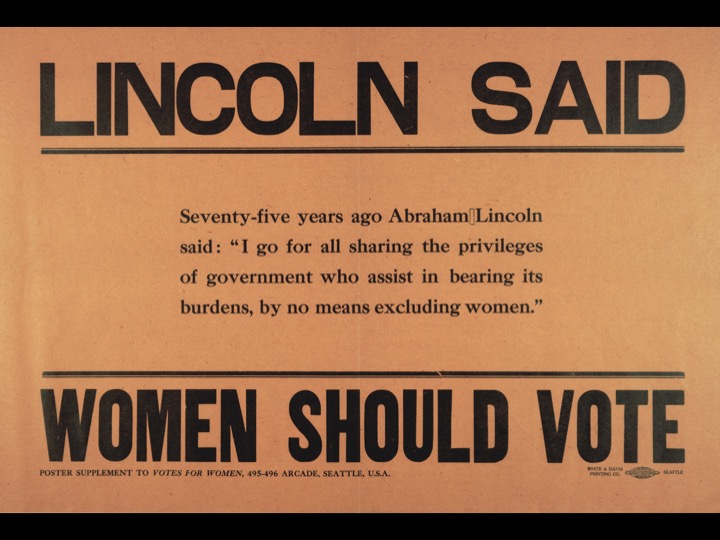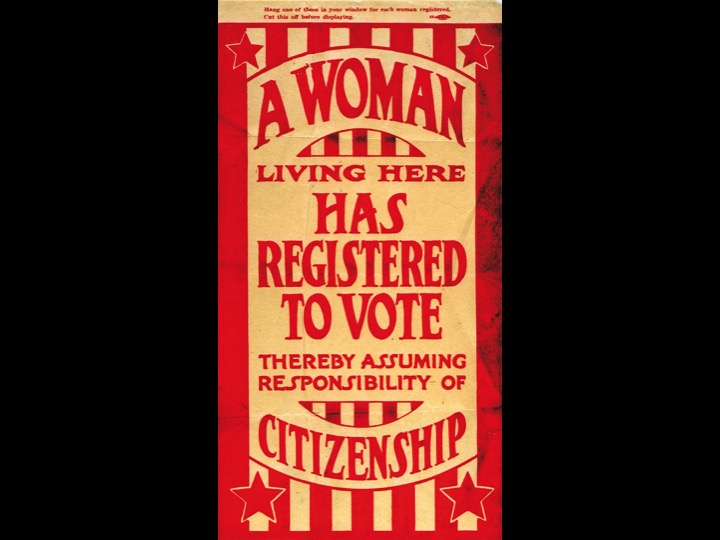With protesters planning to take to the streets across the U.S. this weekend, in echoes of last year’s Women’s March, participants have just hours left to finalize any clever signs or poignant posters they plan to carry.
When it comes to the history of protest, sassy signs are nothing new. In fact, figuring out how to represent a protest movement with a few snappy words or an incisive image is a crucial component to making a movement work. And when that effort is successful, it can be truly memorable, as shown by these examples of protest visuals, from the new book Signs of Resistance: A Visual History of Protest in America by Bonnie Siegler.
The images range from clever to earnest, and can be surprisingly timely even today. In 1913, one poster used the cliché “Imitation Is the Sincerest Form of Flattery” to encourage states to follow their neighbors in extending suffrage to women, and a 1972 poster designed by the Chicago Women’s Graphics Collective went the straightforward route, declaring that “WOMEN ARE NOT CHICKS.” And then there’s the drawing of a nurturing mother that James Montgomery Flagg — who created the iconic image of Uncle Sam during World War I — designed for a cover of a National Women Suffrage Association publication The Woman Citizen in 1917.
“The hope was that there would be power in showing women not just as women, but as the mothers of all voters,” Siegler writes. “It was a gentle, non-threatening way to prod the men who could change the law.”
In an era before social media, big, bold typefaces and capital letters — as seen in the 1936 image of the “A Man Was Lynched Yesterday” flag that the NAACP would fly at its Manhattan headquarters on Fifth Avenue — were also an easy way to quickly convey facts to the most amount of people, Siegler explains. And for those who were shocked by President Trump’s use of vulgar language on the topic of immigration, the editorial cartoons protesting the Chinese Exclusion Act featured in the book may make you feel like not much as changed.
Even so, Siegler hopes readers will feel more optimistic after browsing this anthology.
“While I was compiling this book, I went back and forth between rage and hope — rage because, to quote a favorite sign at the Women’s March, ‘I can’t believe we are still protesting this [s–t].’ And hope because, looking at these images reminded me, and I hope others, that there have been other dark, shameful chapters in American history, and yet somehow democracy survived,” she writes. “Because we did what we do best: We kept fighting.”







More Must-Reads From TIME
- The 100 Most Influential People of 2024
- Coco Gauff Is Playing for Herself Now
- Scenes From Pro-Palestinian Encampments Across U.S. Universities
- 6 Compliments That Land Every Time
- If You're Dating Right Now , You're Brave: Column
- The AI That Could Heal a Divided Internet
- Fallout Is a Brilliant Model for the Future of Video Game Adaptations
- Want Weekly Recs on What to Watch, Read, and More? Sign Up for Worth Your Time
Write to Olivia B. Waxman at olivia.waxman@time.com